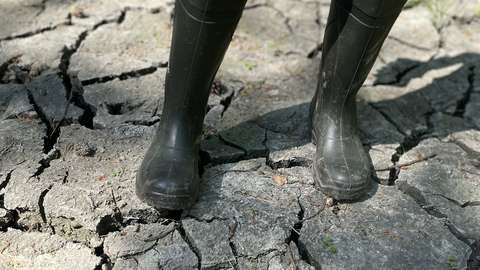Espoo studies heat risks to improve preparedness for climate change

As extreme weather phenomena become more intense and common, the need to adapt to the changing climate increases. Espoo is involved in a research project coordinated by the Finnish Meteorological Institute, which examines the state of today’s climate and future scenarios. The aim is to obtain accurate regional information on climate change and to assess what kind of impacts adaptation measures have in the Uusimaa municipalities. In addition to Espoo, the ILMOS Uusimaa joint research project includes Vantaa, Kauniainen, Kerava, Järvenpää and Tuusula.
The climate in Espoo has already changed. Already in 2014, Espoo had a record-breaking 25-day heatwave, during which a temperature of over 30 degrees was measured in Nuuksio for six consecutive days. Based on predictions, summers in Finland will become hotter and heat waves more common as a result of climate change. Winters on the other half will become milder and the amount of rainfall will increase. In order to take risks into account in the city's operations, we must predict future weather and climate conditions.
The project examines temperature changes and the costs of climate risks and adaptation measures
The research project examines how climate change affects temperatures, heat waves and situations in which winter temperatures are around zero degrees Celsius. The project will also examine changes in the amount of rainfall and drought periods. As part of the project, the Finnish Meteorological Institute will create a small climate model for Espoo and produce very accurate regional information on the climate. At the same time, they will study how forest and water areas and the change in urban structure affect local temperatures.
“The research data produced by the ILMOS project supports the development of the action plan for adaptation in Espoo. Specific assessments of how heatwaves affect different areas, for example, help us target measures where they have the greatest impact,” says Tarja Söderman, Director of Environmental Affairs.
Hot temperature and heat waves can also reduce comfort and increase the need to cool down buildings. Through this, the research project is useful for property owners, for example.
“For us in the Premises Department, understanding how climate change affects the conditions and maintenance of buildings is very important. The regional temperature data produced by the ILMOS project helps us prepare for the extreme conditions of the future,” says Maija Lehtinen, Managing Director of the Premises Department.
The project also assesses the costs of climate risks and adaptation measures. It looks at the benefits and costs of adding green spaces to cities, for example. These are compared to a situation where no adaptation measures are taken. The economic impacts are also studied from the perspective of the most vulnerable groups of people, such as older people and young children.
Information benefits the city and residents
The information and maps generated in the research project will be added to the city’s geographic information system. This way, the city can use this information in future construction projects to identify local climate risks and plan targeted adaptation measures.
The project will also produce narrative descriptions of climate change. Personal stories will illustrate the impacts of climate change and what the adaptation measures could be. The stories will make the information produced in the project easily accessible and understandable, especially for residents.
The ILMOS project will continue until the end of May 2027. Espoo’s Environmental Protection and Premises Department will participate in the project. Within the city, Environmental Protection will be responsible for project coordination.
Read more about the project (in Finnish): Research cooperation helps municipalities in Uusimaa adapt to climate change (Finnish Meteorological Institute)(external link, opens in a new window)